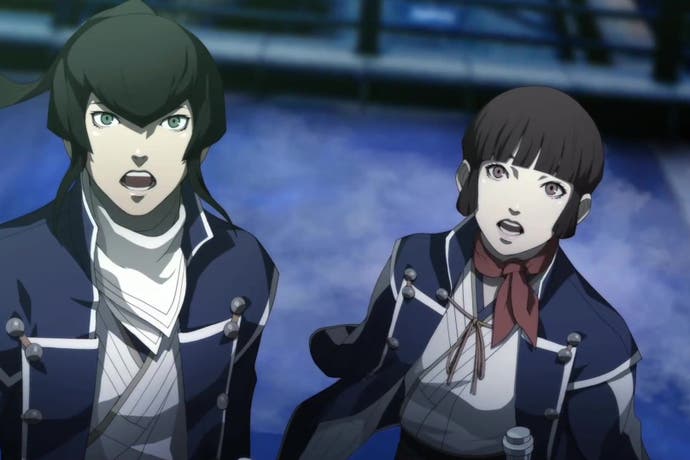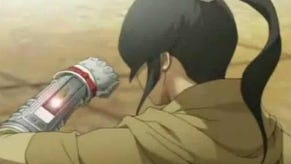Shin Megami Tensei 4 review
Going digital.
This is an import review of the North American edition of Shin Megami Tensei 4. The game has no European release date at present, and cannot be played on a European 3DS.
Just over a decade: that's how long it's been since we last saw a numbered entry in the main Shin Megami Tensei series. But while that may seem like a suspiciously long time, the last 10 years have hardly been starved of demon-fusing. The PlayStation 2 hosted two action-RPGs in Raidou Kuzunoha vs. The Soulless Army and its sequel. The DS adapted the formula into a tactical RPG with Devil Survivor. And for those who like a bit of romance between their occult antics, the recent instalments in the Persona subseries have helped keep MegaTen refreshingly relevant.
As adept at reinvention as developer Atlus is, though, the 4 in the title of this 3DS game - now available in North America - seems like a statement. Shin Megami Tensei 3: Nocturne (known as Lucifer's Call in Europe) was, in many ways, a turning point for the series. It wasn't the first MegaTen game to earn a western release, but it was the first to receive widespread acclaim outside of its native Japan. So does this mean that Shin Megami Tensei 4 is the next evolutionary leap for one of the oldest role-playing series in gaming? Not really - but that doesn't stop it from being an excellent RPG in its own right.
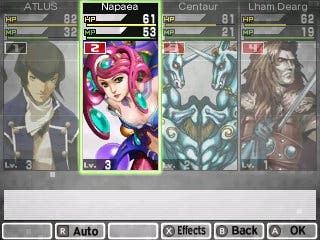
The game begins in a medieval city as the player character - named Flynn by default - attends a ceremony that will determine whether he's destined to become a Samurai. Unsurprisingly, it turns out that Flynn is the man for the job, and along with four other successful candidates, he's inducted into the Samurai ranks. But these aren't the katana-wielding warriors from the Japanese history books. Instead, these Samurai are tasked with keeping the kingdom of Mikado safe from the threat of demons, and to do this, they wield a special gauntlet that lets them fight demons with demons.
While Pokémon trainers are pampered with a choice of three powerful beasts right from the get-go, Shin Megami Tensei 4 points you towards the door of the first dungeon and leaves you to it. From here, the story picks up pace as you're ordered to track down the mysterious Black Samurai who is turning the lower-class residents of Mikado into demons, and after working your way through a subterranean tower that rests at the heart of the city, you discover - minor spoiler alert - a more technologically advanced population that lives in the underground city of Tokyo.
In keeping with series tradition, Shin Megami Tensei 4's story is split between three conflicting yet interwoven paths - law, chaos and neutral. Your three main companions each represent one of these ideologies, and while you can choose to side with one rather than the other, it's a choice that's born almost entirely from necessity. The central characters are all voiced to a pleasingly high standard but they lack the infectious personalities of the Persona series' stars. There's also a sense that this game was built on a modest budget, as the story is largely conveyed through 2D images with the odd animation or cinematic sequence thrown in for good measure.
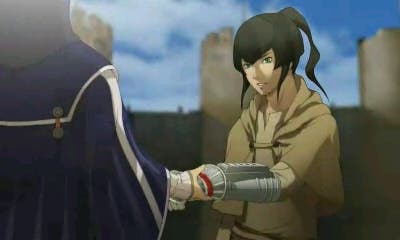
In no way does Shin Megami Tensei 4 feel like an underdeveloped game, but some of the design decisions are a tad reductive. You navigate the first city by selecting a location from the menu and then arriving at a static 2D backdrop with a handful of NPCs. In contrast, the second city has you moving a cursor across a 3D cityscape from a bird's-eye perspective, which just comes across as clunky and unnecessary. Thankfully, these are minor blemishes when compared to the quality of the combat system.
Anyone who's played a Shin Megami game before will be partially familiar with how the demon recruiting and fusion systems work. Instead of trying to exploit an enemy's elemental or physical weakness, you can ask them to become your ally. This takes you through some multiple choice questions where you can attempt to flatter, bribe or cheat them over to your cause, and while it often seems like the outcome is randomised, persistence and repeated use of the Load Save function will always prevail. This game also has the highest demon tally yet, with a checklist of over 400.
While navigating the cities is a fairly abstract process, the 3D dungeons are comparatively concrete. You control Flynn from a third-person perspective as the demons materialise in and out of existence around him. Landing the pre-emptive strike before a charging enemy can touch you is virtually a necessity. This is a Shin Megami game through and through in terms of combat difficulty. It's all too easy for a straightforward battle to turn into your funeral if you give the enemy so much as an inch. That's a big part of the game's charm; it forces you to keep one step ahead of the demons.
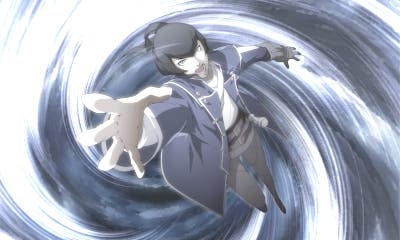
When you do fall in battle, death turns out to be more of an inconvenience than a conclusion. The ferryman at the River of Styx offers to resurrect you for Macca (the game's currency) - or even Nintendo Play Coins, if you've grown tired of hiring heroes in StreetPass Quest. To make sure these trips to the underworld aren't too regular an occurrence, it's necessary to grind out a few levels and undertake the odd side-quest. The objectives are rarely more complicated than "collect this" or "kill that", but they do a solid job of breaking up the pace between the main missions.
Despite its hardcore heritage, Shin Megami Tensei 4 is surprisingly helpful in other areas. This is largely thanks to the Burroughs AI that resides in Flynn's gauntlet and handles everything from the StreetPass system that lets you trade demons with other players to the demon fusing and search options in the Cathedral of Shadows. The satisfaction of using a three-way Special Fusion to create a particularly potent demon has lost none of its appeal, especially when you look at your favourite demon's extensive creation history - which lists all its previous forms - during the latter stages of the game.
If you hurry through the main quest then you should reach the end credits in around 40 hours. A lot of this time will be spent fusing demons so that your current team can survive the worst that the next boss has to offer. However, if there's one tiny change that makes a substantial difference to the fusion process, it's the fact that you can now pick which skills your new demon will inherit. If you've played the previous games then you'll know just what a godsend this is.
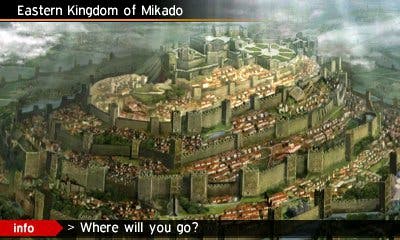
Shin Megami 4 feels like a refinement rather than a reinvention. It retains the 2D battles, demon fusing and morally rigid storyline that the primary series is known for, while adding a few new systems that don't so much dilute the challenge as make it more manageable. Anyone expecting the same level of teen drama offered by the Persona series may find the characters a little flat, but if you embrace the depths of the fusion system, there's nothing quite like building a squad of demons that can unleash hell in perfect harmony.
The only downside is that Shin Megami Tensei 4 doesn't have a confirmed European release date, and unless you want to go down the costly route of buying an American 3DS, you'll have to wait for Atlus to come good. Still, with all the excellent games that have bombarded the 3DS this year already, maybe waiting a little longer isn't such a bad thing.
